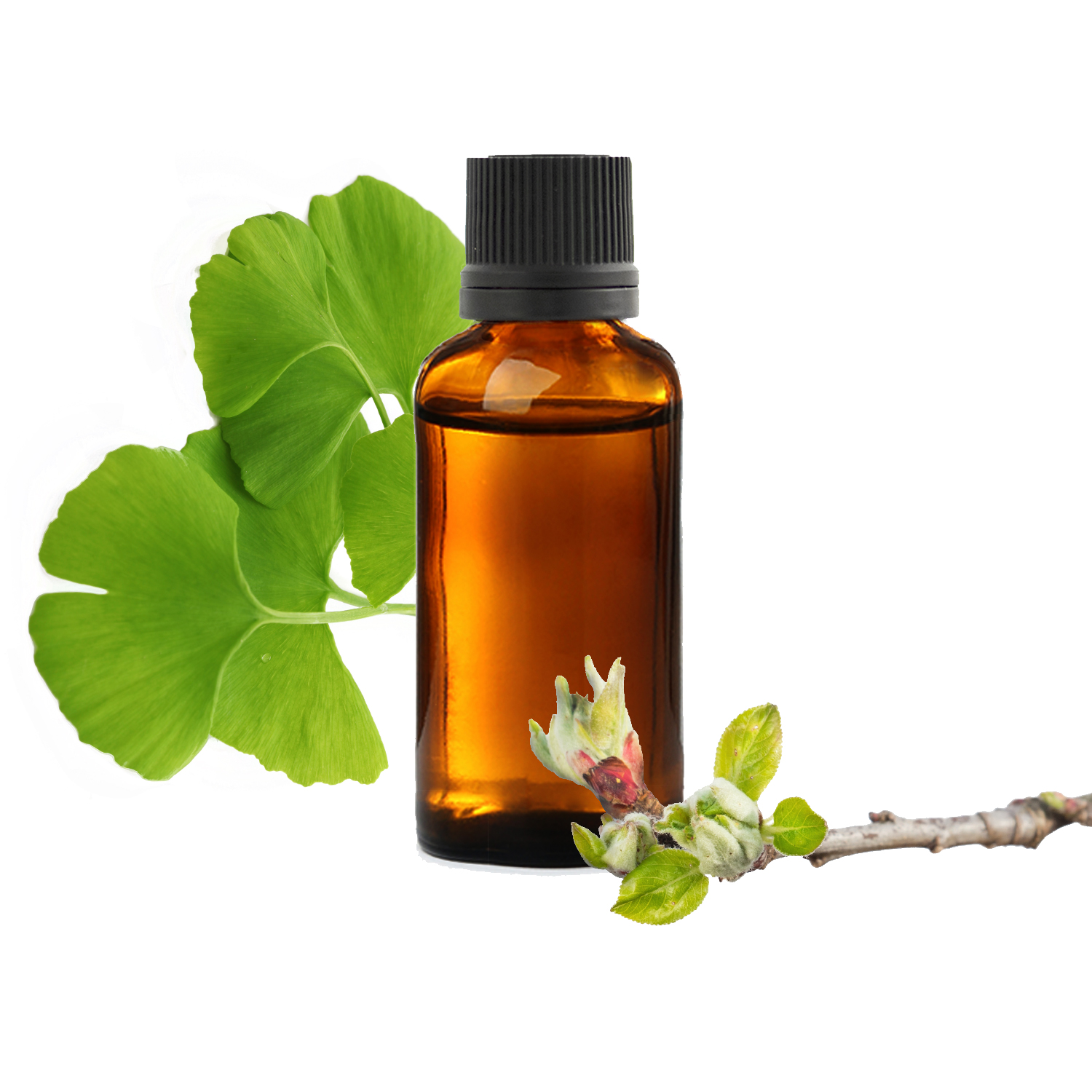
Ginkgo biloba is the only resistant member of the Ginkgoaceae family. This tree with its characteristically shaped leaves is full of molecules with medicinal properties that can be found even in its fresh buds... Macerated, the latter are an excellent support, particularly for the elderly, thanks to their anti-oxidant functions. , circulatory and anti-inflammatory. Ginkgo biloba bud macerate will be very suitable for situations of cellular aging, memory disorders and circulation disorders. Latin name: Ginkgo biloba. Part used: Fresh buds
This article was updated on 19/07/2023For what problems should it be used?
-
Blood and lymphatic system ++++ : Varicose ulcer, Tinnitus, Arteriosclerosis, Atherosclerosis, Hemorrhoids, Hypoacusis, Heavy legs, Edema, Phlebitis, Raynaud's syndrome, Thrombosis (prevention), Varicose veins, Vertigo
-
Nervous system +++ : Anxiety, Insomnia, Migraine, Concentration problems, Memory problems
-
Eye system +++ : Glaucoma, Retinopathy
-
Urogenital system +++ : Premenstrual syndrome
-
Cutaneous system +++ : Rosacea, Oily skin, Dry skin
-
Metabolic system ++ : Diabetes
-
Immune and respiratory system ++ : Allergy, Immunity
How to use it alone?
Adults and adolescents : 5 to 15 drops per day in a glass of water, divided into 1 to 3 doses during the day depending on the case, 15 minutes before a meal for 3 weeks. Start with 5 drops and increase gradually:
- or one drop per day up to 15,
- i.e. 5 drops the first week, 10 the second and 15 the last.
Children over 3 years old : 1 drop per day for 10 kilos. Start with 1 drop and gradually increase.
Synergistic uses
Tinnitus
When tinnitus is linked to poor blood circulation, Ginkgo Biloba bud macerate can be used in combination with that of Mountain ash to promote better circulation.
Hypoacusis
In the event of a circulation disorder causing a form of deafness, macerates of Ginkgo Biloba buds and Mountain ash can be used for their blood thinning property.
Rosacea
Ginkgo Biloba is relatively versatile in its action on the circulation, but can be combined with a venous decongestant such as Chestnut tree and to a hepatic and blood draining agent such as Walnut.
Migraine
Ginkgo Biloba can be combined withGlutinous Alder and at Apple tree, which promote cerebral circulation and have an antispasmodic action. The Apple Tree is particularly interesting if the migraine is linked to menstrual cycle disorders.
Main properties
-
circulatory :
ginkgo acts on several levels on circulation. It regulates the permeability of capillaries, promotes fluidification, increases the resistance of arterial membranes, stimulates the regeneration of capillary walls, and fights against their inflammation. In short, it constitutes a venous, arterial and lymphatic tonic. Its action is quite targeted on microcirculation which it improves, but also on general circulation. This allows better irrigation of the organs, particularly the sense organs, and the extremities. Its decongestant action is useful in the symptoms of premenstrual syndrome. Its action on both circulation and anti-oxidant is also beneficial for the brain. Ginkgo can thus be useful in cases of memory or concentration disorders, in cases of senile dementia, psychological disorders, anxiety, etc.
-
anti-oxidant :
ginkgo Biloba is rich in flavonoids, antioxidant molecules that fight against the impact of free radicals. It thus acts as a cellular anti-aging agent both at the membrane and molecular level. Coupled with its circulatory action, this makes Ginkgo bud macerate the macerate for elderly people par excellence.
-
anti-infectious, immunomodulating :
ginkgo Biloba bud macerate helps fight infections, and promote or even regulate the functioning of the immune system. It notably moderates its reactions, in the event of inflammation for example, or an allergic reaction.
-
blood sugar control :
the flavonoids present in Ginkgo help increase the release of insulin by the Langherans cells of the pancreas, and normalize moderate diabetes. This also helps combat certain side effects caused by diabetes.
Precautions for use
- Ginkgo biloba bud macerate is a herbal food supplement. It does not replace a varied diet and a healthy lifestyle. It is important to keep it out of the reach of children and not to exceed the recommended daily dose. Dosages must be adapted for young children.
- Ginkgo biloba bud macerate is authorized for the whole family, except for babies under 3 years old and pregnant or breastfeeding women.
- Not recommended in case of anticoagulant treatment or antidepressant. The people hemophiliacs or preparing to undergo a surgery should not use this bud macerate either.
- Seek medical advice if taking drug treatments.
- Store away from light and heat.
What does a good Ginkgo biloba bud macerate look like?
Botanical characteristics
- Latin name: Ginkgo biloba L.
- Botanical family: Ginkgoaceae
- Distilled part: fresh buds
Composition
- Composition: Alcohol* 32%, Water, Vegetable glycerin*, Ginkgo biloba bud extract (Ginkgo biloba L.)*.
Organoleptic characteristics
- Appearance: liquid - possible cloudiness
- Color: golden yellow
- Odor: characteristic, slightly alcoholic.
- Taste: fresh, characteristic, alcoholic.
Was this article helpful to you?
Average grade: 4.8 ( 346 votes)
Bibliography
Work : Piterà di Clima, F., & Nicoletti, M. (2018). Summary of gemmotherapy - Scientific foundations of Meristemotherapy. Amyris Editions.
Work : Boistard, S. (2016). Gemmotherapy - Buds for health - Practical and family guide. Terran Publishing.
Work : Andrianne, P. (2011). Treatise on gemmotherapy: Therapy using buds. Amyris Editions.
Work : Halfon, R. (2011). Gemmotherapy - Health through buds. Dangles Editions.
Work : Ledoux, F., & Guéniot, G. (2014). Phytembryotherapy: The embryo of gemmotherapy. Amyris Editions.
Work : Pineau, L. (2019). The great book of gemmotherapy. Leduc.s Éditions.


